By the end of April 1975, North Vietnamese forces were closing in on Saigon. It was apparent that South Vietnam was going to fall. The US was already evacuating people from major airports. However, the NVA was on the outskirts of Saigon and several airports were coming under artillery attack. With many people still stuck in Vietnam, the United States launched Operation Frequent Wind, a massive helicopter evacuation to air-lift as many evacuees as possible. From April 29 to April 30, over 7000 people were airlifted out of South Vietnam to the safety of American warships offshore. The Operation was a source for many of the most well known images of the Vietnam war.
While many are familiar with the large helicopter evacuation, the self-imposed evacuation of tens of thousands of South Vietnamese people is less known. Evacuating the country by aircraft and boat, South Vietnamese civilians traveled to the American evacuation fleet. In this article, we will look at one of these escapes as one man risked everything to get his family out of Vietnam. It involves the carrier USS Midway (CV-41), a Cessna O-1, and one of the most daring escapes ever.
An example of the chaos onboard the USS Midway with numerous helicopters waiting to land.
On 29 April 1975, the evacuation of South Vietnam was in full swing. However, not everyone could get to the evacuation points. South Vietnamese Air Force Major Buang-Ly was one of these people. He sought to escape the country with his family and reach the US evacuation fleet. Loading his wife and five children into a Cessna O-1 “Bird Dog”, he took off from Con Son island south of mainland Vietnam. Taking off and setting a course for the ocean, he came under enemy fire from the ground several times. Luckily, Buang-Ly managed to make it out to sea without any damage. Once he got offshore, he began a search for the US Naval ships in the area. Through an amazing stroke of luck, he managed to locate the US fleet offshore.
As we looked over the assembled ships, he saw the carrier USS Midway (CV-41). Unfortunately, the Midway was in the middle of landing the evacuation helicopters. Her flight deck was littered with helicopters and even more were waiting to land. Buang-Ly began to circle the carrier with his landing lights turned on. Crewmembers on board the USS Midway soon spotted the small aircraft. Attempts to contact the aircraft through radio communications failed. Buang-Ly continued to circle the carrier while the crew tried to figure out how to deal with this new situation.
An example of a helicopter ditching alongside the USS Midway. The pilot in this photo was rescued by boat.
Due to the overwhelmingly large number of helicopters, the carrier was having many aircraft ditch alongside after dropping the passengers off. Rescue boats would then pick up the crew and bring them back to the ships. At first, it was hoped that that the Cessna could do the same thing. However, as Buang-Ly made another pass over the carrier, a spotter reported seeing around four people in the Cessna. All thoughts of having the plane ditch were quickly abandoned as the craft was severely overloaded. It was thought unlikely that all passengers could be rescued from the plane quick enough if it ditched into the sea.
By this point, the Cessna began to swoop over the carrier. This occurred several times before Major Buang-Ly managed to drop a note onto the flight deck. The note simply read,
“Can you move the helicopter to the other side, I can land on your runway, I can fly for one hour more, we have enough time to move. Please rescue me! Major Buang, wife and 5 child.”
Realizing that time was quickly running out, the crew of the Midway sprang into action. The Captain of the USS Midway, Lawrence Chambers, quickly ordered all arresting cables to be stowed and the helicopters on deck to be moved out of the way. If they couldn’t be moved fast enough, they were to be pushed over the side of the carrier. He ordered any and all volunteers to the deck to help with moving the choppers. Midway crewmembers of all ranks hurried to the deck and began clear the deck in preparation for landing.
A UH-1 of the South Vietnamese air force is pushed off the flight deck of the USS Midway. It is estimated that up to 10 million dollars worth of equipment was pushed overboard.
Once the task was finished and the deck clear, the Cessna lined up with the carrier. Conditions were less than ideal. The ceiling was 500 feet, visibility had been reduced to 5 miles, and it began to rain lightly. To make matters worse, the wind picked up to 15 knots and 5 additional helicopters had already landed on the Midway. Captain Chambers ordered those helicopters immediately pushed overboard and the ship to speed into the wind at 25 knots. Meanwhile, the ships radio crew began to broadcast numerous messages in both English and Vietnamese about carrier landing hazards. The threat of downdrafts generated behind carriers was particularly worrisome. The many crewmembers who had helped clear the decks earlier were now crowded onto the deck themselves. Everyone was intently watching as the Cessna began making its landing run.
The Cessna O-1 just prior to touchdown on the flight deck of the USS Midway. The landing was described as a textbook example of a perfect landing.
There are numerous things that can go wrong when landing on a carrier. However, none of those things occurred and Major Buang-Ly managed a perfect landing on the USS Midway. The Cessna touched down, bounced once and came to a stop alongside the Midway’s island. The crewmembers on deck immediately broke into wild cheering and they swarmed the small Cessna, clapping and congratulating the Major for his feat.
The Cessna following its landing. Celebrating crewmembers are already rushing towards the aircraft.
Following his landing, Buang-Ly was escorted to the Bridge of the Midway where Captain Chambers himself congratulated the Major for, “his outstanding airmanship and his bravery in risking everything on a gamble beyond the point of no return without knowing for certain a carrier would be where he needed it.” Not only had Major Buang-Ly managed to fly his family out of Vietnam, but he had somehow managed to guess where the US fleet would be. The crew of the USS Midway were so impressed with the exploit of Major Buang-Ly that they set up a fund to get him and his family settled into the United States.
So ends one of the greatest escapes in history. Despite the odds, Buang-Ly and his family managed to escape Vietnam for the United States where they are today. The O-1 aircraft he used to escape has been preserved at the Naval Aviation Museum in Pensacola, Florida. Major Buang-Ly also holds the distinction of being the only Vietnamese pilot to land a fixed wing aircraft aboard a United States aircraft carrier.
Swarms of crewmembers surround Major Buang-Ly and his family, congratulating them for their heroic feat.
A final note of interest in this story is that of the Midway’s captain, Lawrence Chambers. He had only been commanding the carrier for a few weeks prior to this incident. While he was worried that he would be removed from command for allowing the landing to take place, he allowed it because, “When a man has the courage to put his family in a plane and make a daring escape like that, you have to have the heart to let him in.”
Further Links
Want to follow Navy General Board on Social Media? Check us out on the platforms below!
More Great Articles
The biggest Cruisers of World War II.
Life aboard a US Navy Battleship During the Korean War.
Why were so many Warships Never Built?
The Iowa Class Battleship, A Departure from Traditional Design

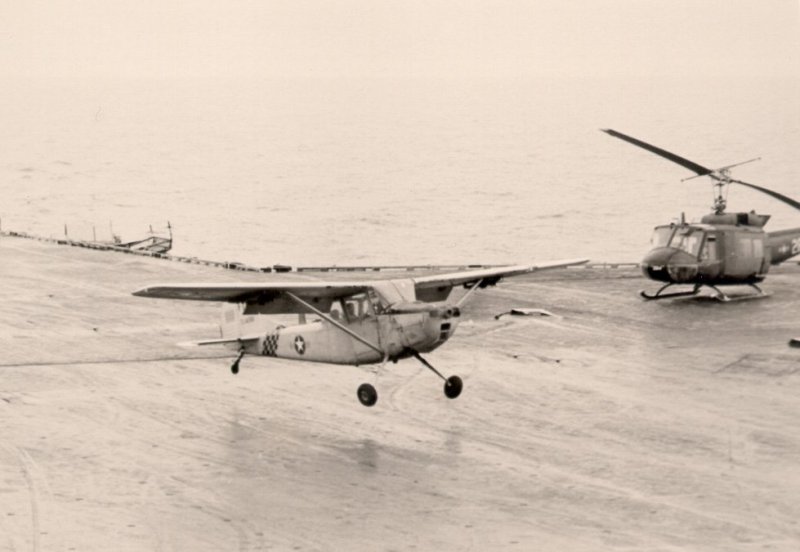
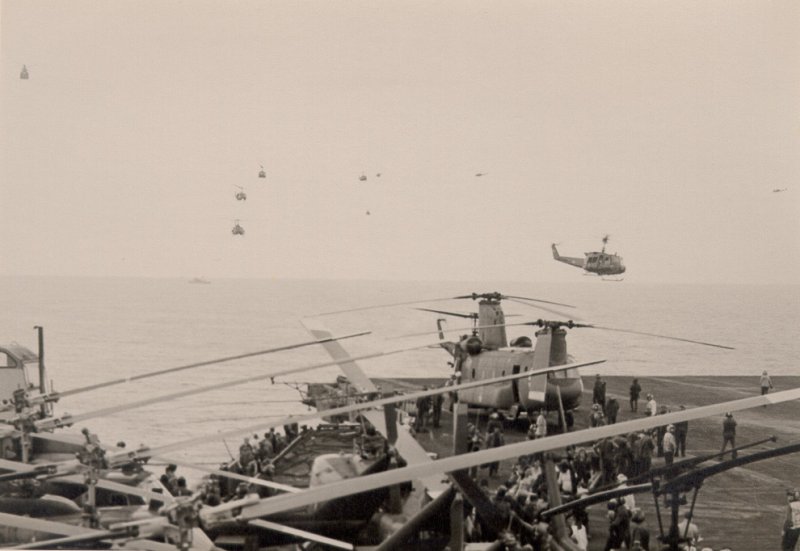
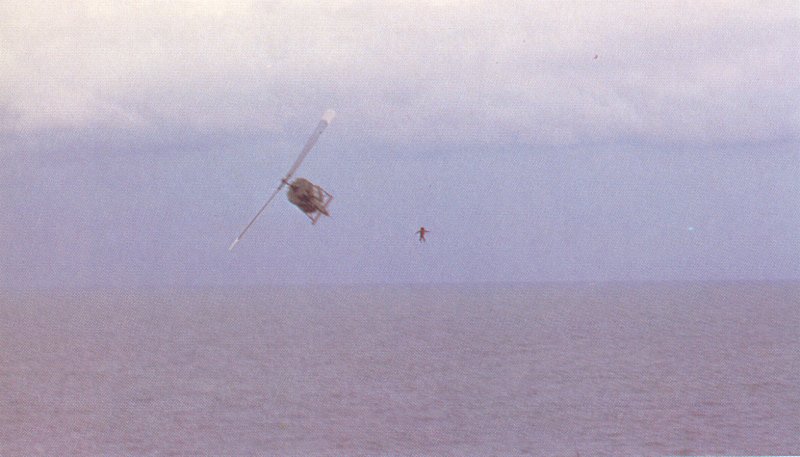

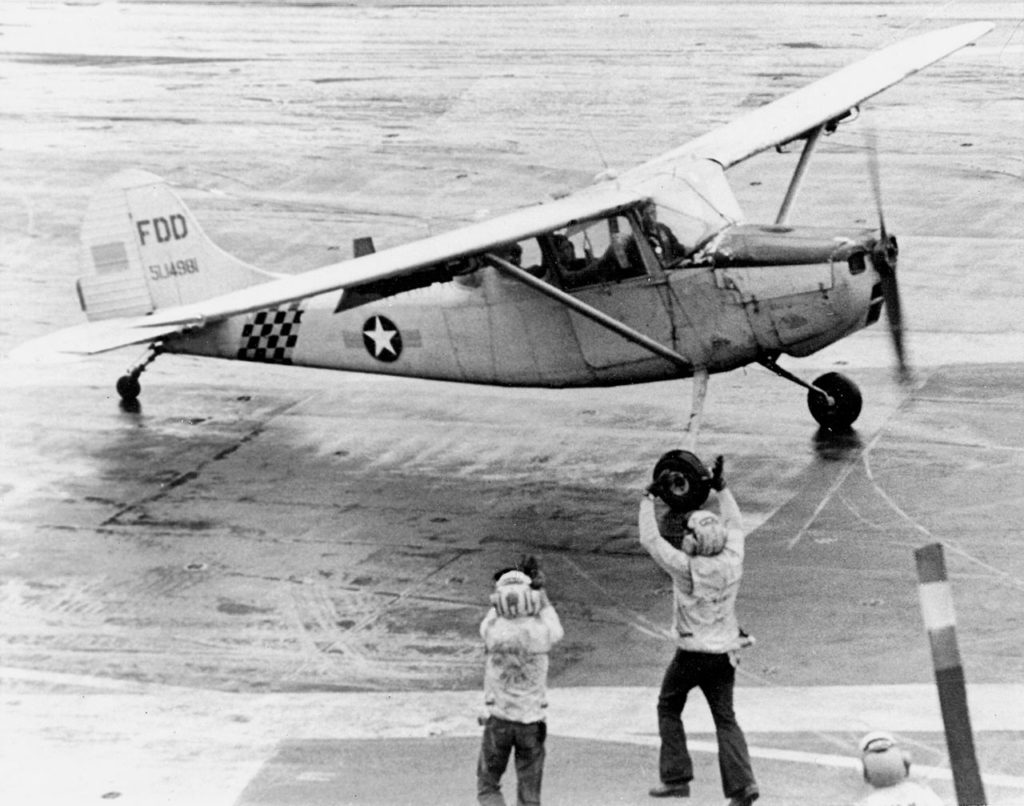
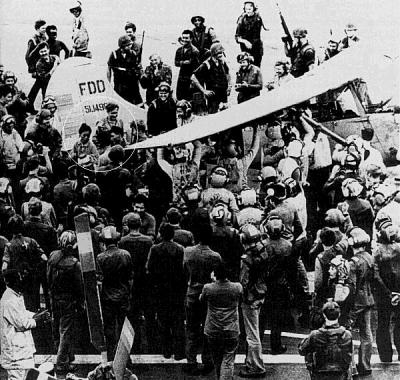

Recent Comments